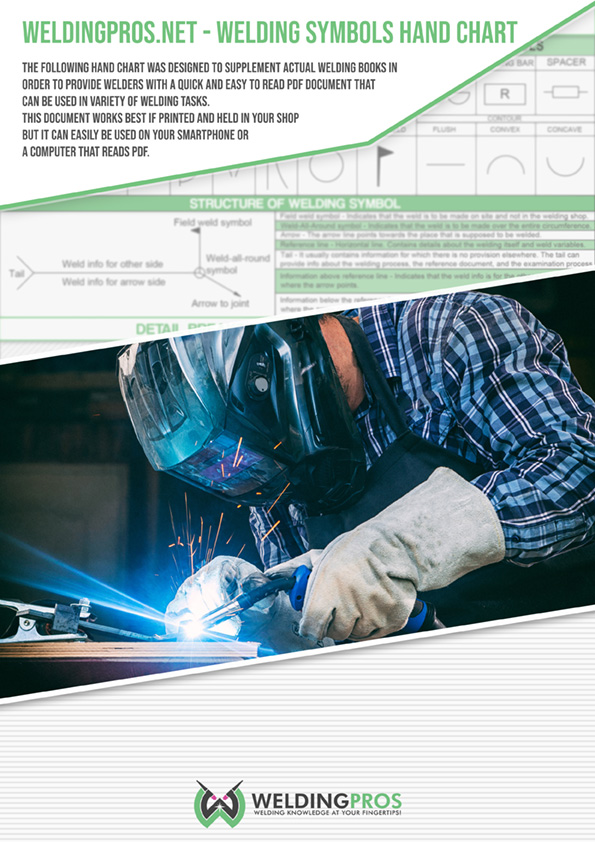The world of food and beverage manufacturing is constantly evolving, with innovations in technology driving the industry forward. One such technology that has been gaining popularity in recent years is Tungsten Inert Gas (TIG) welding.
While TIG welding has been widely used in industries such as aerospace and automotive, its applications in the food and beverage industry are just starting to be realized.
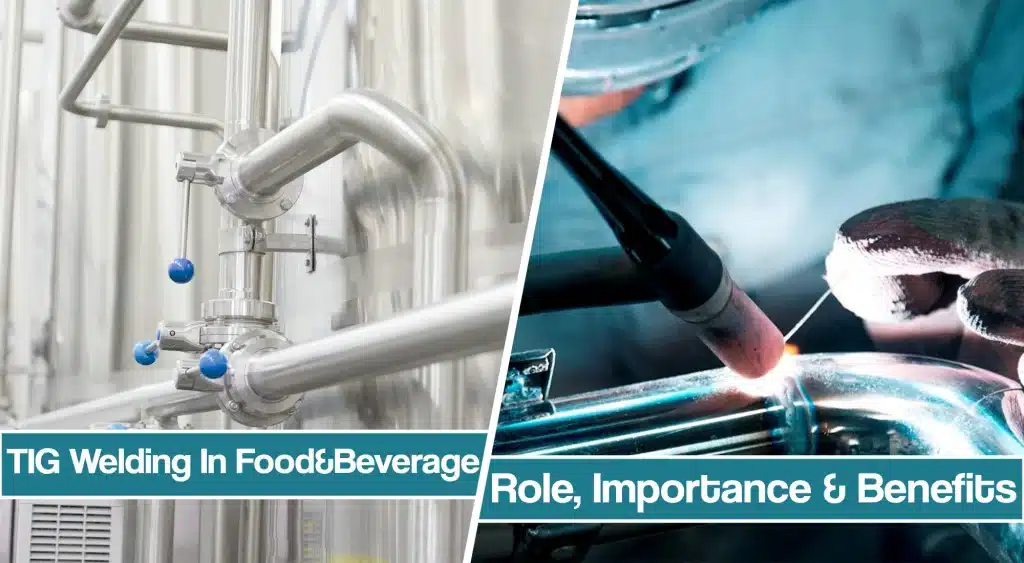
In this article, we will explore the benefits and challenges of using TIG welding in food and beverage industry, and how it is helping manufacturers maintain high standards of quality and safety.
Critical Points Of the Food And Beverage Industry
The food and beverage industry is a highly regulated industry with critical points and requirements to ensure the safety and quality of its products. Some of the critical points and requirements of the food and beverage industry include:
- Food Safety: Food safety is paramount in the food and beverage industry. Manufacturers must ensure that their products are free from harmful contaminants and comply with all relevant regulations and standards.
- Quality Control: The quality of food and beverage products is essential to maintain customer satisfaction and brand reputation. Quality control systems must be in place to ensure that products meet the required standards of taste, texture, and appearance.
- Traceability: Traceability is crucial in the food and beverage industry to identify the source of any issues that may arise. Manufacturers must be able to trace their products from raw materials to finished goods.
- Hygiene: Hygiene is essential to prevent contamination and maintain the safety of food and beverage products. Manufacturers must follow strict hygiene practices in their facilities and ensure that employees are trained in proper hygiene practices.
- Compliance: Compliance with regulatory requirements is essential in the food and beverage industry. Companies must follow a variety of regulations and standards, including food safety regulations, environmental regulations, and labor laws.
Why Is TIG Welding Right Choice For Food And Beverage Industry?
TIG welding is suitable for the food and beverage industry due to its ability to produce high-quality and precise welds, its versatility, and its safety benefits.
The use of TIG welding in the industry helps to ensure that the products are of high quality and free from contaminants, while also improving the safety of the welding process. TIG welding produces high-quality welds that are clean and precise, with minimal heat distortion.
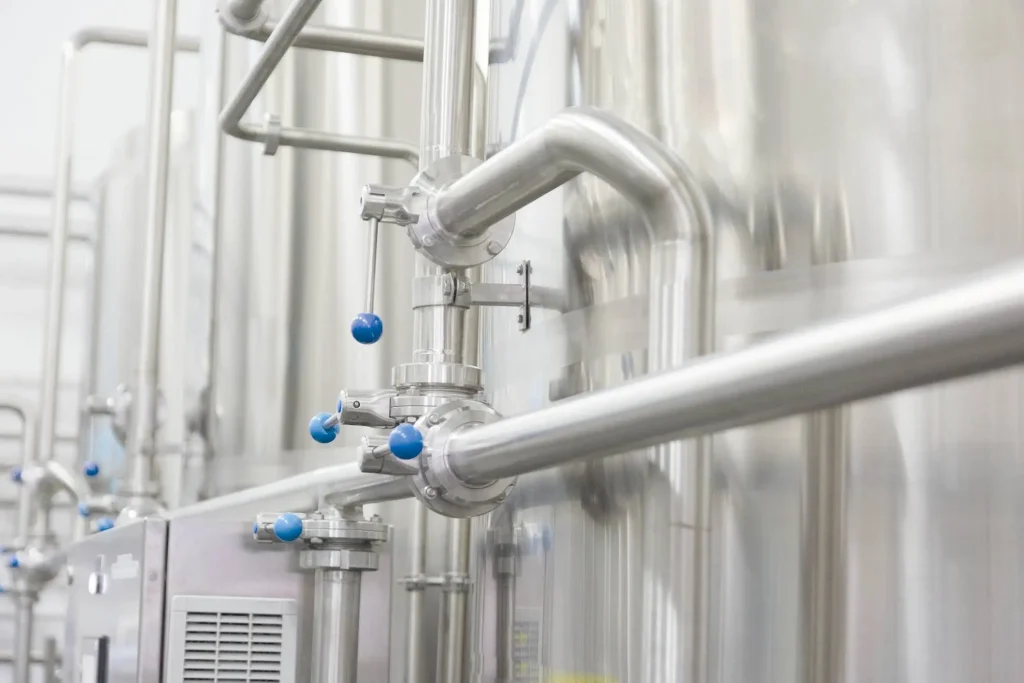
This is particularly important in the food and beverage industry, where the products must be free from contaminants and bacteria. Additionally, TIG welding does not require the use of filler material in thin weld seams, which means there is no risk of foreign material contaminating the two butt welds or the product being welded.
GTAW can be used to weld a wide range of materials, including stainless steel, aluminum, and copper. This makes it a versatile welding process that can be used in various applications within the food and beverage industry. The excellent control over the weld, allows the welder to make precise adjustments to the welding parameters as needed. This ensures that the weld is consistent and meets the required quality standards to obtain a smooth weld finish suitable for sanitary applications. In addition, TIG welding produces less smoke, fumes, and spatter than other welding processes, making it a safer option for the welder and the surrounding environment.
Requirements And Certification For Food And Beverage Industry
There are various requirements and certifications that are required for TIG welding in the food and beverage industry. These requirements and certifications are put in place to ensure that the welding process and the resulting products are safe, hygienic, and of high quality.
Some of the key requirements and certifications for TIG welding in the food and beverage industry include:
- Compliance with food safety regulations: TIG welding must be performed in accordance with food safety regulations, such as those set forth by the Food and Drug Administration (FDA) and the United States Department of Agriculture (USDA). These regulations specify the materials, welding processes, and hygiene practices that must be followed to ensure the safety of food products.
- Certification of welders and welding procedures: Welders who perform TIG welding in the food and beverage industry must be certified to perform the welding process. This certification ensures that the welder has the necessary training and experience to perform the welding process in a safe and effective manner. Additionally, welding procedures must also be certified to ensure that they meet the necessary standards for the industry.
- Use of proper equipment and materials: TIG welding in the food and beverage industry requires the use of specific equipment and materials that meet industry standards. This includes using welding machines that are designed for food-grade welding and using materials that are food-safe and free from contaminants.
- Traceability and documentation: Traceability and documentation are critical in the food and beverage industry, and this extends to TIG welding as well. Welding procedures and materials must be properly documented, and the resulting products must be traceable to their source.
How Much Do TIG Welders In Food And Beverage Industry Make?
The salary for TIG welders in the food and beverage industry can vary depending on factors such as experience, location, and company size. According to Glassdoor, the average base pay for TIG welders in the food and beverage industry is around $19 to $29 per hour. However, this can vary greatly depending on the specific position and company. The annual salary ranges from $39,520 to $60,320.
Keep in mind that entry-level TIG welders with 0-2 years of experience can make approximately $35,000 or even less if working in one of the low-paying states and companies. However, seasoned welders with more than 7 years of experience can easily reach $100,000-150,000 a year.
Common Materials And TIG Welded Parts In Food And Beverage Industry
TIG welding is commonly used in the food and beverage industry to weld a variety of materials and components that require a high level of precision, cleanliness, and durability.
Some of the common TIG welded parts in the food and beverage industry include storage or process tank, pipe welding, heat exchangers, and other components that require a high degree of precision and cleanliness, and they are usually made of stainless steel, aluminum, copper, and titanium.
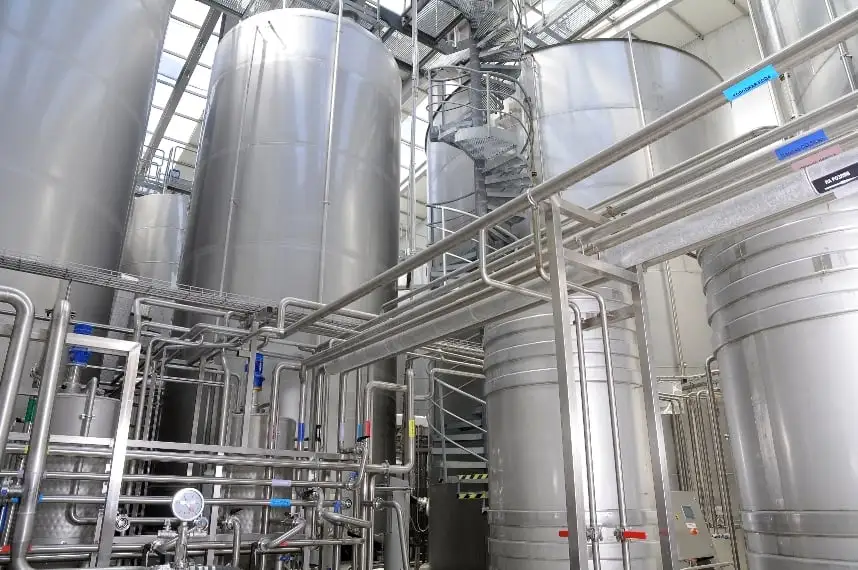
Stainless steel is a popular material in the food and beverage industry due to its corrosion resistance, durability, and hygienic properties. TIG welding stainless steel is commonly used to join stainless steel tanks, piping, and other components with subsequent surface treatment.
Aluminum is another material that is commonly used in the food and beverage industry. It is lightweight, durable, and has excellent thermal conductivity. TIG welding is often used to weld aluminum tanks, heat exchangers, and other components.
Copper is a material that is often used in the food and beverage industry for its excellent thermal conductivity. TIG welding is commonly used to weld copper piping and heat exchangers and yields high weld quality. Titanium is a material that is used in the food and beverage industry for its corrosion resistance and durability. TIG welding is commonly used to make seam welds on titanium tanks, piping, and other components.
Fighting The Corrosion
TIG welding produces clean, precise, and high-quality welds that minimize the risk of corrosion. It is essential to protect the oxide layer and retain corrosion resistance for several reasons. The products produced in the food and beverage industry are meant for human consumption. As such, they must be free from contaminants and harmful substances. Corrosion can lead to the release of harmful particles into the food or beverage product, which can cause health problems for consumers.

The food and beverage industry requires a high level of hygiene to ensure that the products are safe for consumption. Corrosion can compromise the cleanliness of finished surface of the production equipment and lead to contamination of the product. The equipment used in the food and beverage industry must be durable to withstand the harsh conditions of food production. Corrosion can weaken the equipment and reduce its lifespan, resulting in increased maintenance costs and downtime.
Protecting the oxide layer and retaining corrosion resistance can help to reduce maintenance costs and downtime. Regular maintenance and repair of corroded equipment can be expensive and time-consuming. By protecting the oxide layer and retaining corrosion resistance, the food and beverage industry can ensure that their products are safe, hygienic, and of high quality.
Shielding Gases
Forming gases are an important part of the TIG process for welding in the food and beverage industry. These gases are used to create an inert environment around the weld zone, which helps to prevent oxidation and ensure a clean, high-quality weld. The two most commonly used forming gases in TIG welding are argon and helium.
Argon is the most widely used forming gas in TIG welding in the food and beverage industry. It is an inert gas that does not react with other materials, making it ideal for creating an oxygen-free environment around the weld zone. Argon is also readily available and relatively inexpensive.
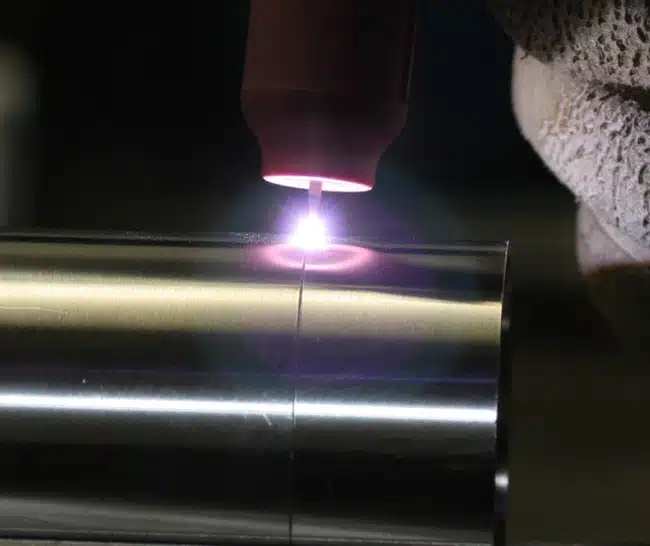
Helium is another forming gas that is sometimes used in TIG welding in the food and beverage industry. It is less commonly used than argon, but it can be useful in certain applications. Helium is lighter than air, which can help to improve arc stability and penetration in some situations. It can also help to increase welding speed and productivity.
In some cases, a mixture of argon and helium may be used as a forming gas. This can help to balance the benefits of both gases, such as improved penetration and arc stability with increased welding speed.
Skill To Focus On When TIG Welding In F&B Industry
GTAW in the food and beverage industry requires a high level of skill and attention to detail to ensure that the resulting products are safe, in hygienic environments, and of high quality. TIG welders should have a strong understanding of hygiene practices and follow strict hygiene protocols when working in the food and beverage industry. This includes using appropriate personal protective equipment (PPE), cleaning and sanitizing the equipment before and after use, and following good manufacturing practices (GMPs).
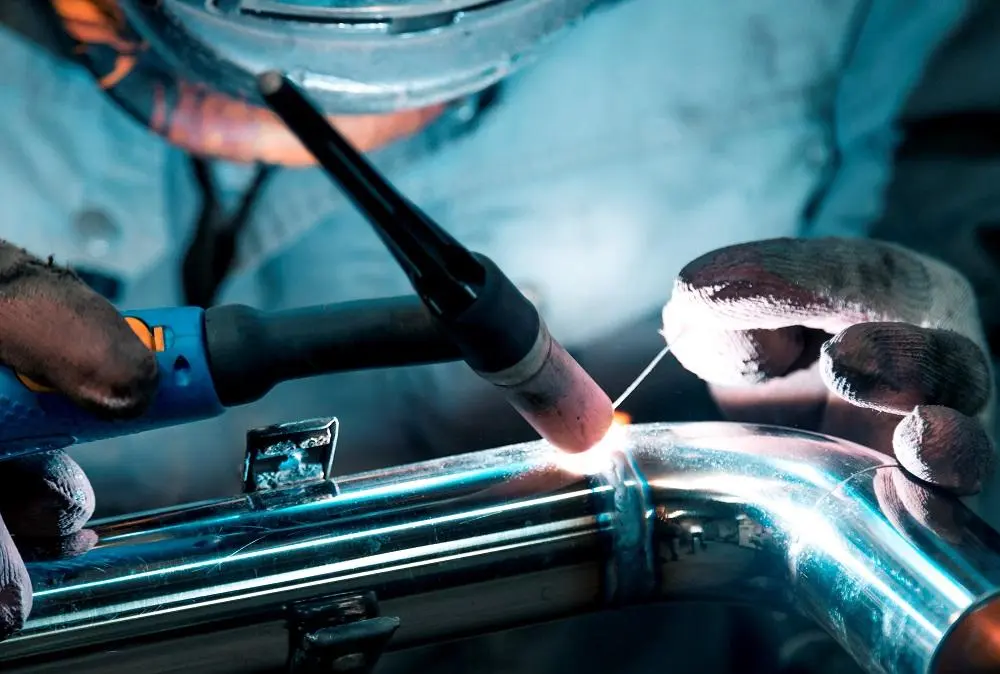
TIG welding in the food and beverage industry requires a high degree of precision to ensure that the welds are clean and free from defects. Welders should have a steady hand and excellent hand-eye coordination to produce precise welds. TIG welders should have a good understanding of the materials that are commonly used in the food and beverage industry, such as stainless steel and aluminum. They should know how to select the appropriate materials for the job and have a good understanding of how different materials behave during the welding process.
Welders should have a good understanding of the materials that are commonly used in the food and beverage industry, such as stainless steel and aluminum. They should know how to select the appropriate materials for the job and have a good understanding of how different materials behave during the welding process.
Automated TIG Welding In Food And Beverage Industry
Automated TIG welding is becoming increasingly popular in the food and beverage industry, as it offers several advantages and improved efficiency over traditional manual TIG welding. Automated welding equipment includes robotic welding systems, to perform the welding process automatically.
One of the primary benefits of automated TIG welding is improved consistency and quality. Automated systems can be programmed to perform precise and repeatable welds, ensuring that each weld and internal weld seams are consistent and of high quality. This can help to improve overall product quality and reduce the risk of defects or failures.
Another advantage of automated TIG welding is increased efficiency and productivity in welding area. Automated systems can work continuously, without the need for breaks or rest periods, and can perform welds at a much faster rate than manual welding. This can help to increase production capacity and reduce lead times.
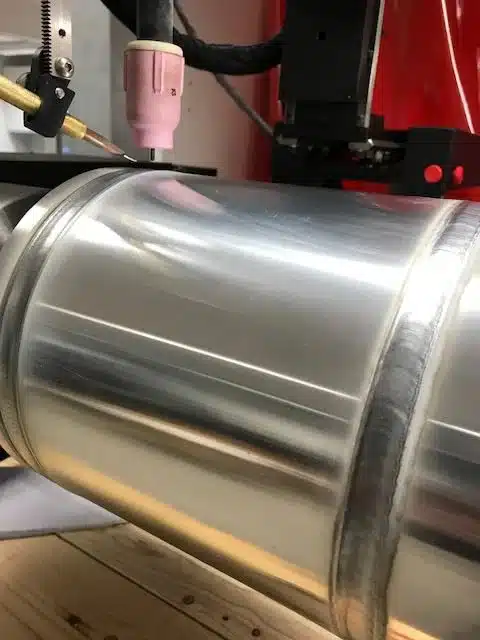
Automated TIG welding can also help to improve safety in the food and beverage industry. Welding can be a hazardous process, and automated systems can help to reduce the risk of injuries and accidents by removing the need for manual welding. Additionally, it yields superior radiography test performance. With good weld preparation, you can achieve higher-quality welds, with less surface roughness and better weld integrity.
However, implementing automated TIG welding systems in the food and beverage industry requires significant investment in specialized equipment and training. Automated systems can be complex and require skilled operators to set up and maintain them. Additionally, there may be limitations to the types of welds that can be performed using automated systems, as they may not be suitable for certain materials or applications.
Conclusion
TIG welding is a critical process in the food and beverage industry and plays a significant role in ensuring the safety and quality of food products and avoiding weld reinforcement. By maintaining high standards and following industry-specific requirements, TIG welders can help to ensure that food and beverage processing equipment and systems perform reliably and efficiently while minimizing the risk of contamination and ensuring compliance with regulatory standards, and yielding excellent weld quality.
However, to ensure high-quality TIG welds with excellent weld surface finish in the food and beverage industry, welders must have specialized training and certification to meet industry-specific requirements. Moreover, they must follow strict hygiene and safety protocols to prevent contamination and ensure the safety of food products.
Resources
- https://www.weldingsuppliesfromioc.com/blog/welding-in-the-food-world/
- https://www.fronius.com/en/welding-technology/world-of-welding/food-beverage
- https://blog.perfectwelding.fronius.com/en/clean-and-hygienic-tig-welding-in-the-food-and-drinks-industry/
- https://tiptig.com/food-dairy-industry/
- https://dentechindustrial.com/news/welding-for-food-applications/




